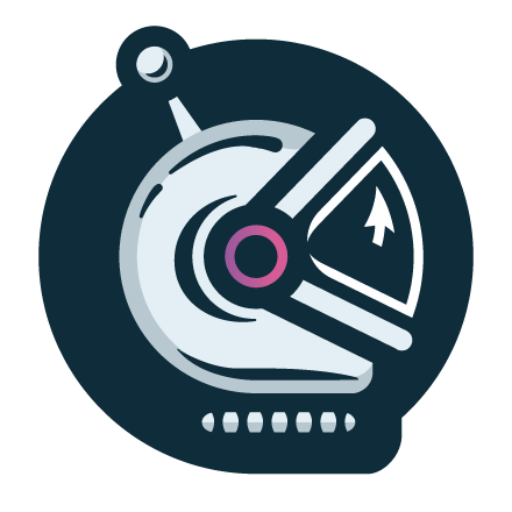PPC (Pay per click) is an advertising model in which advertisers pay each time someone clicks on their ad.
It is one of the most popular forms of online marketing and has become the preferred method of many marketers. It allows them to target only those users who are looking for goods/services using specific keywords.
There are many platforms that offer PPC advertising, but the main ones are Google Ads, Bing Ads, and Facebook Ads. Over the past several years, these platforms have emerged as the most popular destinations for online advertising, especially Google and Facebook since they have more traffic.
They are quite distinct in their own right, but one common characteristic they all share is that advertisers bid for keywords.
Google Ads
Google Ads is the largest PPC platform in the world with millions of businesses using the ad platform.
Registering is very easy too. You can start working on Google Ads with any Google account. If you have a Google account, you can start with that. It also provides powerful tools for managing your campaigns, analyzing your data, and optimizing your advertising dollars – all within the platform.
Bing Ads
Bing Ads is Microsoft’s own advertising platform which currently accounts for more than 14% of all US digital ad revenue (5th largest), making it a serious player in the space.
The way Bing ads work is very similar to Google Ads in that you bid on keywords. You bid on the keywords you want your ad to show up for and then set a budget to start the ads.
Facebook Ads
Facebook Ads is currently the 2nd largest PPC platform, with millions of ad accounts. The great thing about Facebook Ads is that businesses can target their ideal customers based on their interests, demographics, and even their past behavior on Facebook.
It also provides advertisers with highly detailed reports about their ad campaigns through the Facebook Analytics tool. The tool makes it easy for marketers to know who saw their ads, what people liked or engaged with most in their posts, and whether specific ads are performing better than others.
Understanding PPC Terms and Definitions
As we continue, we will use a lot of abbreviations and acronyms. To make it easier for you to understand, we have compiled a list of the most commonly used PPC terms to get you started:
- Ad Rank – The position of your ad on the search engine results page (SERP). The higher your ad rank, the more likely you are to get clicked.
- CPC (Cost Per Click) – The amount you pay each time someone clicks on your ad.
- CPM (Cost Per Thousand Impressions) – The amount you pay for every 1,000 times your ad is displayed.
- Keyword Match Type – Specifies how closely your keyword should match what someone is searching for in order to trigger your ad.
- Bidding – The act of setting the maximum amount you’re willing to pay for a click on your ad.
- Positioning – Determines where your ad will appear on the page, relative to other ads.
- CPC (Cost-Per-Click) – The average amount you’ve paid each time someone clicks on your ad.
- CTR (Click-Through-Rate) – The percentage of people who clicked on the ad.
- Quality Score – A metric used by Google Ads that measures how relevant your ad is to the keywords it’s targeting, as well as the quality of your website landing page.
- Geographical Targeting – Allows advertisers to target their ads to people in particular locations, usually done through IP geolocation.
- Device Targeting – Lets advertisers advertise on mobile devices or desktop computers, depending on their ad objectives.
- Ad Extensions – The extra features you can add at the top of each ad that provides more information about your business, such as links for directions/hours, phone numbers, etc.
- Ad Text – The ad copy that appears directly on the search engine results page.
- ROI (Return On Investment) – The amount of money you make from your ad campaigns, minus the amount you’ve spent on them.
- ROAS (Return On Ad Spend) – A performance measure used by most PPC platforms that tells you how much money you’ve made from a specific ad campaign, divided by the amount you spent on it.
Why PPC Marketing Is So Popular
The biggest reason PPC marketing is so popular is that it’s extremely effective. When your business decides to spend the time and money on a PPC campaign, you can really see a difference in sales for a pretty low cost.
This makes it much easier for businesses to return a sizable profit from their investment since people have already shown an interest in what they have to offer.
Here are a few more reasons…
1. PPC Contributes to Business Goals
One of the main reasons businesses turn to PPC marketing is because it contributes directly to their overall business goals. Whether you’re looking to increase brand awareness, website traffic, or sales, PPC can help you achieve those goals efficiently and effectively.
2. PPC Is Measurable
Unlike other forms of marketing such as PR, PPC is highly measurable. This means that businesses can track every single penny they spend. They can track how much money is being spent on each campaign, how many clicks they’re receiving, and which ads are performing the best.
This data can then be used to make informed decisions about where to allocate future budgets and improve ad campaigns accordingly.
3. PPC Is Scalable
Another great thing about PPC is that it’s highly scalable. Meaning, businesses can increase or decrease their spending on PPC campaigns as needed, depending on how well they’re performing. You can grow your ad spend as much or as little as you want, making it a really flexible model.
Additionally, you can also adjust your bids to ensure that you’re getting the best possible ROI from your campaigns.
4. PPC Is Flexible
PPC is also very flexible, which means that you can tailor it to fit your specific business needs. You can choose which platforms to use, and the service you want to sell. You can then target relevant keywords and spend the money accordingly. This flexibility makes PPC an excellent option for businesses of all sizes and industries.
5. PPC Is Easily Integratable with Other Marketing Strategies
PPC is highly compatible with other marketing strategies, including SEO. They are both two sides of the same coin –– search engine marketing. While SEO helps you get free, organic traffic to your website PPC ads drive paid/targeted traffic that you can convert into customers.
4 Core Steps to Creating an Effective PPC Management Strategy
Determining the overall goal for each campaign, how much you’re willing to spend, and what you expect from it.
There are seven steps to crafting a perfect Pay Per Click management strategy. Once you follow these steps, achieving the desired result with your PPC campaigns will be a much simpler task.
1. Determining Goals and Target Market
Every campaign you create should have a specific goal and have a predefined target market. This goal can be anything from increasing sales to generating leads to gaining more exposure for your brand. You can finalize your business goals by:
- Assessing your business needs helps you understand what your business needs to grow
- Defining what is achievable and what’s not allows you to work on only achievable goals saves your valuable time
- Creating short-term and long-term goals lets you prioritize your goals and scale up or down as needed
And you can determine your target audience in more than one way.
Method #1: Target By Keyword
Finding your target audience by keywords is the most popular method used by newbie PPC users. But it can be very limiting for businesses with a more advanced strategy.
You can go straight to one of the leading search engines, Google or Bing, and start typing in different keywords that are relevant to your brand while using the tools they offer.
Method #2: Target By Interest Group
This is one of the best ways to target your audience if you have an existing email list full of highly targeted subscribers or customers who are likely interested in what you have to offer.
Facebook Ads let you show ads based on specific interests so this is a great option if your campaigns are being created through this platform since their ad system allows for highly detailed options.
Method #3: Target By Location
Do you have a physical location of your audience where you want to make sure your ads are shown? Google Ads is the perfect option for this. You can target specific locations by simply entering their address.
Once the target audience is determined, you can create an ad account before moving to the next steps.
Create an Ad Account Structure
Before you create an ad account, it’s important to map out the structure first. Seriously, we can’t stress this enough––if you neglect this step and jump straight into creating your ads and keywords, you’ll run into problems down the line.
Here’s a list of all the elements in a typical ad hierarchy:
- Google Account: This is the top-level account that will contain all your other Ads accounts and data.
- Campaign: A campaign is a collection of ad groups, which are groups of ads created to target a specific set of keywords.
- Ad Group: An ad group contains one or more ads, along with a list of related keywords.
- Ad: An individual ad that you create, consisting of the ad headline, description, and website URL.
- Keyword: A keyword is a word or phrase that is relevant to your product or service. It consists of a match type and a list of related search queries.
- Ad set: An ad set is a collection of ads targeting a specific audience.
- Ad: An ad in an ad set.
2. Keyword Research
The next step to PPC management is compiling a list of relevant keywords that your target audience is likely searching on. But finding the perfect keywords for your PPC ad could be tricky at times.
When you target the wrong keywords, you can end up getting only clicks without any sign-ups or leads.
Here’s how to find keywords that can get you your desired PPC campaign outcome:
Step 1 – Google Keywords Planner: This is Google’s very own keyword tool that helps you discover the right keywords. You can get started by typing what type of word or topic your company offers, and the tool will provide a list of relevant keywords.
Step 2 – Google Trends: This tool helps you determine the popularity of keywords over time. Simply type in a keyword or topic, and it will generate a graph that shows how popular each term is.
Step 3 – Competition Analysis: Use this to see what your competitors are advertising for on PPC. You can find keywords based on difficulty, search volume, etc. Once you find the right keywords, make sure to create broad, medium, and exact match types.
Step 4 – Long Tail Keywords: These are specific keywords that are more targeted and have low competition. They’re perfect for PPC campaigns because they have a higher conversion rate than general keywords.
Examples of long-tail keywords if you are an SEO agency in New York. “SEO company in NY,” “which is the best NYC local SEO agency,” and “hire the best NY SEO company.”
These keywords are mostly more than three words long and are specific to what you offer.
3. Creating an Ad Group
Combining related keywords into a single ad group so you can better manage them together. This also helps make your ads more relevant to potential customers.
The best way to go about creating an ad group is creating Single Keywords Ad Group a.k.a SKAG. These SKAGs should contain 1-3 keywords and a corresponding ad.
- How to create great PPC ads
Now it’s time to create your ad. This is where you’ll put all that juicy information you have about your product and services that you’re trying to sell.
There are a few things you need to know before creating your ad, such as:
- The character limit for headlines (25 characters) and descriptions (80 characters)
- What type of ad do you want to create: text, image, or video?
- Should you use dynamic keyword insertion?
While writing ads:
- Keep it relevant to the keyword you’re targeting
- Put the main benefit in the headline
- Use secondary information in your description
Here are some examples of good ads that will surely get you more clicks and conversions.
Example 1:

Key Points:
- Simple and straight to the point
- Builds trust
- Clearly explained services
- Includes pricing to deter unqualified leads
Example 2:

Key Points:
- Clear description
- Builds on brand
- Clearly listed services
- Call to action ad extensions
It’s important that your ad text follows these guidelines because they’ll help optimize the performance of each respective ad group within your PPC campaign.
4. Setting Your Bids
Bidding is how you’ll tell Google how much you’re willing to pay for a click on your ad. You have two options when it comes to bidding: manual and automatic.
Manual bidding lets you decide how much you want to spend on each click and will increase or decrease your bids as needed. Automatic bidding sets your bids at the best possible price to get you the most clicks while staying within your budget.
Three Things to Consider While You Are Bidding
There are a few things you have to consider when you are setting your bids in any PPC ads:
#1. Average CPC of your keyword
While you bid, you need to consider the average CPC of the keyword. What you don’t want is to spend more on a click than what the keyword is worth. You can find this information by heading over to “Keyword Planner” and looking at the “Avg. CPC.”
#2. Your budget
The second thing you need to consider is – of course – your budget. How much are you willing to spend on your PPC campaign? By setting a daily budget, you’re telling Google the maximum amount of money you’re willing to spend each day on your ads.
#3. ROI
You also need to consider the ROI while bidding. You should know what you’ll get in return for your campaign. To do that, consider the cost of your products or services as well as the money it costs to promote leads.
#4 Target Search Page Location
This bid strategy suggests that you increase or decrease your bids based on where your ad appears. Because ads that appear at the top of search results get more clicks than those ads listed further down. For example, it will take more to get a click if your ad isn’t above the organic rankings.
5. Scheduling
Decide when to run your ads so that they reach the people you’re trying to target. Scheduling the among the key factors to consider while setting your PPC ad campaigns. Because it allows you to work with limited client service hours, supply and demand.
#1. Days of the week: Different days of the week have different levels of traffic, with some days being busier than others. You’ll want to experiment to see which ad schedule works best for you.
#2. Times of the day: if your product targets working professionals, you probably want to put your ads on during non-working hours. That way, you’re reaching the people who typically use your products and services.
#3. Geographic location: if you’re targeting a specific geographic location, you’ll want to adjust your ad schedule to match their hours.
6. Setting a Budget
Determining how much money you want to spend on each campaign so that you don’t go over budget and lose money on wasteful ad campaigns.
Decide what you want your campaign to accomplish: more website traffic, more leads, or more sales? Each business has different goals for its PPC campaigns, so it’s important to start with what you want to achieve.
Set the budget for your entire campaign: This is the maximum amount you’re willing to spend on your entire PPC campaign each day. You can set this budget daily, weekly, or monthly.
Set a budget for each ad group: You need to tell Google how much you want to spend per day on each of your ad groups so that it can automatically adjust your bids accordingly.
7. Tracking & Optimizing
Analyzing data about your campaigns on a regular basis so you can track which keywords are performing the best, which ads are converting the best, etc… then optimizing accordingly.
This is also known as “the never-ending process.”
You can set up PPC tools to track data for you automatically: By tracking data automatically, you’re freeing up time to analyze the data and make optimizations.
There are a few things you need to do on a regular basis to optimize your campaigns.
A/B testing ads: You should be A/B testing your ads to see which ones are performing the best. You can use this data to make optimizations to your campaign.
Adjusting bids: If you see that a particular keyword is performing well, you’ll want to adjust your bid for that keyword so you’re not spending more than you need to.
Reviewing goals: Make sure your goals are still relevant and adjust your campaigns accordingly.
Repeating the Process
Once you take all these steps, you need to repeat them on a continuous basis if you want your PPC campaigns to be successful. To do that, always:
Analyze the results of your campaigns: Look at how each campaign performed. Did you meet or not meet your goals?
Review optimizations: Did any changes you made to improve your campaigns work?
Make tweaks as needed: If certain parts of your campaigns aren’t performing well, try making some adjustments to fix them. Then, repeat the process.
Managing Your Accounts
Your work doesn’t end when you’ve set up your Google Ads account, run a few campaigns and master the process. It’s imperative that you’re actually managing your accounts on a regular basis to ensure the long-term success of PPC campaigns.
There are three things business owners need to do to manage their accounts properly:
Review Ads performance: Look at your data to see how well each campaign is performing. If certain campaigns aren’t reaching their goals, find out why and make necessary changes.
Review with the team: Discuss the reports with your entire marketing team to get their feedback on what’s working and what isn’t. This will help you make any adjustments needed.
Troubleshooting
When running PPC campaigns, there are a number of things that can go wrong. Luckily, most problems have simple fixes that you can implement yourself. Some of the common problems with running PPC ads are:
— The ads aren’t showing: This could be because of budget restrictions, low-quality scores, or keywords that are disapproved.
— The ads are being shown, but no one is clicking on them: This could be due to the wrong keywords being targeted, the ads not being relevant to the landing page, or the ad copy not being appealing.
— The ads are being shown, and people are clicking on them, but they’re not converting: This might be due to the landing page not being relevant to what was promised in the ad. Also, make sure your landing pages load quickly and don’t contain too many distractions.
— Network Issues: There could be an issue with your account or one of the networks that your ad is running on. Check these issues by checking the troubleshooting tools in Ads. If you still can’t figure out what’s wrong, call for customer support.
Reports & Data
There are several reports to choose from in Ads when you want to get an idea of how your campaigns are performing.
— The campaign summary shows your campaigns at a glance. It shows impressions, clicks, CTR, average position, and cost. You can also find out if you’re meeting or not meeting your goal from the reports section.
— Another great report to look at is the “Search Terms” report. This report will show you all of the keywords that your ads are being shown for, as well as how many impressions and clicks they’re getting. You can also see the average position, CTR, and cost for each keyword.
— The “Device” report shows how your campaigns are performing on different devices. You can see data on how your ads are performing on mobile devices, tablets, and desktops.
— The “Placements” report allows you to view the sites where your keywords are being targeted. This report shows impressions, clicks, CTR, average position, and cost.
Choosing the Right PPC Tools
Selecting the right tools to prepare, run, analyze and optimize your PPC tools is extremely crucial. There are a number of different tools to choose from and it can be difficult to determine which is the best for your business.
Below are some of the most popular PPC tools:
AdRoll: AdRoll is a retargeting platform that allows you to target people who have already visited your website.
WordStream: WordStream is a PPC software company for Internet marketing.
SEMrush: SEMrush is a great tool to use for keyword research and competitor analysis. They even have a free 7 day trial period, so you can test out any of their tools before signing up for a plan.
Unbounce: Unbounce is a landing page builder that allows you to create, test, and publish your landing pages quickly and easily.
Databox: Databox is a platform that provides you with all of your business and marketing data in one place.
Ahrefs: Ahrefs is a tool used for SEO and competitor analysis.
Google Ads: Google Ads is the most popular PPC tool and is a must for any business looking to run PPC campaigns.
Conclusion
There you have it – the complete guide to PPC management. By following these steps, you’ll be on your way to successful pay-per-click campaigns in no time.
If you’re not sure where to start, or if you’re struggling with certain aspects of pay-per-click management, contact Pareto PPC for help. We’d be happy to assist you.




